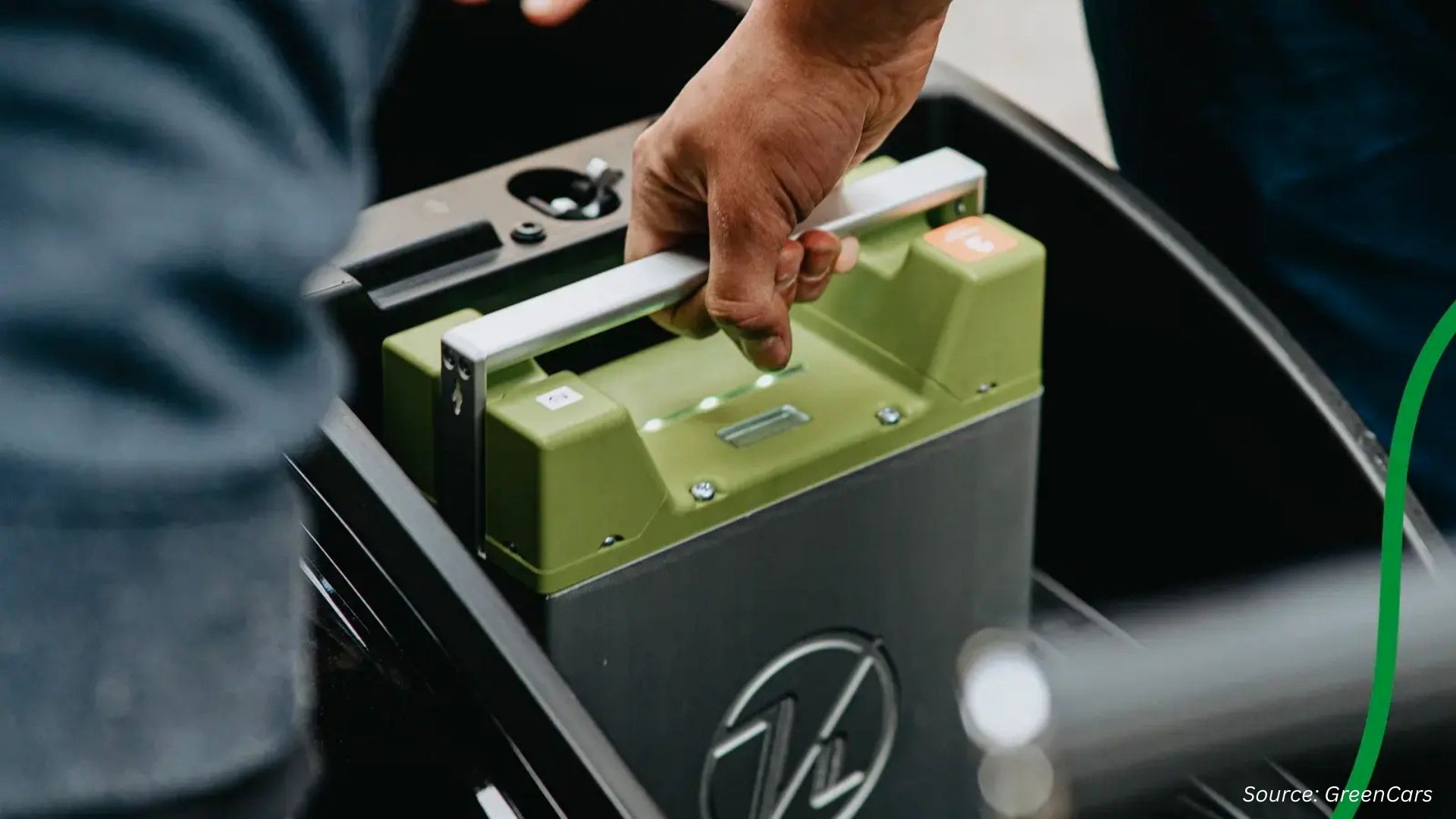
UK Battery Market by Type (Stationary and Motive), by Battery Type (Primary Batteries (Non-rechargeable), and Secondary Batteries (Rechargeable)), by Voltage Type (Low Voltage Batteries (1V - 12V), Medium Voltage Batteries (24V - 100V) and High Voltage Batteries (200V - 1000V)) – Global Opportunity Analysis and Industry Forecast 2023-2030
Industry: Energy & Power | Publish Date: 09-Oct-2025 | No of Pages: 209 | No. of Tables: 168 | No. of Figures: 113 | Format: PDF | Report Code : EP704
Market Definition
UK Battery Market was valued at USD 3.73 billion in 2022, and is predicted to reach USD 13.96 billion by 2030, with a CAGR of 17.9% from 2023 to 2030.
A battery functions as a reservoir for storing energy which it later releases by converting chemical energy into electrical energy. This process is achieved through the utilization of one or more electrochemical cells. Categorized into primary and secondary types, batteries serve as integral components in our daily lives. Primary batteries, also known as non-rechargeable batteries, offer a straightforward and convenient power source for a wide array of portable devices such as cameras, watches, toys, radios, and lighting equipment. In contrast, secondary batteries, termed rechargeable batteries, possess the capability to be replenished with electrical charge subsequent to their discharge. This distinction underscores the indispensable role batteries play in our modern existence.
Acceleration of Electric Vehicle (EV) Adoption
The growing shift toward electric mobility in the UK is significantly boosting the demand for advanced battery technologies. With the government reinforcing its net-zero targets and phasing out internal combustion engines, EV adoption has seen a steady rise across both personal and commercial segments. This shift is creating strong demand for locally manufactured, high-capacity batteries. In response, major investments are being made in battery production facilities—also known as gigafactories—to build a robust domestic supply chain, reduce reliance on imports, and support job creation in the clean-tech sector.
Increasing Need for Energy Storage in Renewable Integration
The UK’s expanding renewable energy capacity, particularly from wind and solar, is creating a parallel need for reliable energy storage systems. Batteries are critical for balancing the grid, managing fluctuations in power generation, and ensuring energy availability during peak demand. As more large-scale battery storage projects are commissioned across the country, supported by favourable policy frameworks and private investment, this segment is emerging as a core pillar of the battery market. These developments not only enhance grid resilience but also contribute to the broader decarbonization of the energy sector.
Safety and Environmental Risks from Battery Handling and Disposal Impact Market Growth
Improper handling and disposal of batteries in the UK raise significant safety and environmental concerns. Used batteries are often discarded in landfills, where they break down over time and release toxic substances such as mercury, cadmium, lithium, and lead. These harmful chemicals can contaminate soil and water sources, threaten ecosystems and harm aquatic life. Such environmental risks contribute to stricter regulations and increased public scrutiny, which can slow battery adoption and challenge the market’s expansion.
Emergence of Solid-State Battery Technology Driving New Growth Prospects
The rising development and adoption of solid-state batteries (SSBs) across industries such as electric vehicles, consumer electronics, and grid storage present a significant growth opportunity for the UK battery market. Solid-state batteries offer enhanced safety, higher energy density, and faster charging compared to conventional lithium-ion cells. These advantages are driving investments in R&D and pilot manufacturing projects within the UK, positioning the country as a key player in next-generation battery technologies. The scalability and improved performance of SSBs could accelerate the transition to cleaner energy systems, supporting the UK’s net-zero ambitions and expanding the market’s potential across multiple sectors.
Competitive Landscape
The UK battery industry includes several market players such as BYD Company Ltd., Tesla, Inc., Toshiba Corporation, Panasonic Corporation, Exide Industries Ltd., EnerSys, Inc., BMZ Group, TDK UK Limited, EVE Energy Co., Ltd., Samsung SDI Co. Ltd., AESC UK Ltd., ZF Friedrichshafen AG, UltraMax Batteries, Ilika plc, Johnson Matthey Battery Systems (Ltd.), and others.
Key Benefits
-
The UK battery market report provides a quantitative analysis of the current market and estimations through 2023-2030 that assists in identifying the prevailing market opportunities to capitalize on.
-
The study comprises a deep dive analysis of the market trend including the current and future trends for depicting the prevalent investment pockets in the market.
-
The information related to key drivers, restraints, and opportunities and their impact on the market is provided in the report.
-
The competitive analysis of the market players along with their market share in the UK battery market.
-
The SWOT analysis and Porter’s Five Forces model are elaborated in the study.
-
Value chain analysis in the market study provides a clear picture of the stakeholders’ roles.
UK Battery Market Key Segments
By Type
-
Stationary
-
Motive
By Battery Type
-
Primary Batteries (Non-rechargeable)
-
Alkaline Batteries
-
Zinc-Carbon Batteries
-
Lithium-Thionyl Chloride Batteries
-
-
Secondary Batteries (Rechargeable)
-
Lead-Acid Batteries
-
Nickel-Cadmium (NiCd) Batteries
-
Nickel-Metal Hydride (NiMH) Batteries
-
Lithium-ion Batteries
-
Lithium Nickel Manganese Cobalt (LI-NMC)
-
Lithium Iron Phosphate (LFP)
-
Lithium Cobalt Oxide (LCO)
-
Lithium Titanate Oxide (LTO)
-
Lithium Manganese Oxide (LMO)
-
Lithium Nickel Cobalt Aluminum Oxide (NCA)
-
- Other Secondary Batteries
-
By Voltage Type
-
Low Voltage Batteries (1V - 12V)
-
Medium Voltage Batteries (24V - 100V)
-
High Voltage Batteries (200V - 1000V)
By Power Capacity
-
Low Capacity Batteries (Up to 1,000 mAh)
-
Medium Capacity Batteries (1,000 mAh to 10,000 mAh)
-
High Capacity Batteries (10,000 mAh to 100,000 mAh)
-
Ultra High Capacity Batteries (More than 100,000 mAh)
By Self-Discharge Rate
-
Low Self-Discharge Rate Batteries
-
Medium Self-Discharge Rate Batteries
-
High Self-Discharge Rate Batteries
By Application
-
Residential
-
Industrial
-
Automotive
-
ICE Engines
-
Passenger vehicles
-
Commercial vehicles
-
-
Electric vehicles
-
E-Bikes
-
E-Cars
-
E-Buses
-
E-Trucks
-
-
-
Medical
-
Telecom & IT
-
Consumer Electronics
-
Power & Utility
-
Aerospace & Defense
-
Marine
-
Other Industries
-
- Commercial
Key Players
-
BYD Company Ltd.
-
Tesla, Inc.
-
Toshiba Corporation
-
Panasonic Corporation
-
Exide Industries Ltd.
-
EnerSys, Inc.
-
BMZ Group
-
TDK UK Limited
-
EVE Energy Co., Ltd.
-
Samsung SDI Co. Ltd.
-
AESC UK Ltd.
-
ZF Friedrichshafen AG
-
UltraMax Batteries
-
Ilika plc
-
Johnson Matthey Battery Systems (Ltd.)
REPORT SCOPE AND SEGMENTATION:
|
Parameters |
Details |
|
Market Size in 2022 |
USD 3.73 billion |
|
Revenue Forecast in 2030 |
USD 13.96 billion |
|
Growth Rate |
CAGR of 17.9% from 2023 to 2030 |
|
Analysis Period |
2022–2030 |
|
Base Year Considered |
2022 |
|
Forecast Period |
2023–2030 |
|
Market Size Estimation |
Billion (USD) |
|
Growth Factors |
Acceleration of Electric Vehicle (EV) Adoption Increasing Need for Energy Storage in Renewable Integration |
|
Companies Profiled |
15 |
|
Market Share |
Available for 10 companies |
|
Customization Scope |
Free customization (equivalent up to 80 working hours of analysts) after purchase. Addition or alteration to country, regional, and segment scope. |
|
Pricing and Purchase Options |
Avail customized purchase options to meet your exact research needs. |

















 Speak to Our Analyst
Speak to Our Analyst

























